“Inclusion is within everyone’s ability.”
—Anonymous
Fostering a society that recognizes and celebrates a vibrant tapestry of diversity is one of the most significant actions we can take as humans. Though we may all have different racial and gender identities, religious beliefs, cultural values, and physical abilities—there’ something we all collectively share.
We all yearn for and deserve justice, safety, security, acceptance, accessibility, health, and love.
Each person deserves a fair and equitable opportunity to realize their needs, wants, and dreams. And there’s one thing we can all do—right now—to make the world a better place…to try and understand where others are coming from.
And that’s precisely why we are talking about one attribute of our beautifully diverse society—disability—and its two most popular models, medical and social, in this week’s blog. Learning about the different models of disability has been essential for us because many of the chronic pain conditions our patients experience contribute to disability. Learning about these models may help you reframe how you look at health, healing, and wellbeing.
The Medical Model of Disability
So, what is the medical model of disability? Simply put, the medical model of disability sees an individual’s disability as a medical problem, and sets out to treat, cure, or heal it. That explanation may sound simple enough, but this common understanding may cause those who live with a disability to feel undervalued, pressured to fit into a norm, or excluded from society at large. And that’s never the goal.
Like all medical professionals, we at Pain Free for Life often look at disability through the lens of the medical model. That isn’t to say we don’t consider the social model (more on that in a bit).
We’ve heard from some of our patients with a disability that their physical limitations are less of a burden than the societal preconceptions and misconceptions they experience. We treat patients every day who live a life that looks significantly different from average due to their health challenges. Some have even referred to their chronic pain conditions as “The Invisible Disability.”
Doctors aren’t setting out to “other” those with disabilities or invalidate their unique attributes—they are simply doing their job—facilitating treatment. All medical treatment aims to prevent or treat health conditions that affect quality of life.
Many people are raised only knowing about or understanding the medical model of disability, but that’s changing as disability activists and advocates present another way of looking at disabilities.
The Social Model of Disability
The social model of disability is a message championed by disability activists and scholars that places a distinction between impairment and disability. In this social model, it is believed that the person’s impairment isn’t the problem—it’s the inhospitable and inaccessible world around them that poses the real challenge.
The social disability model takes the onus off the disabled person and refocuses on how society should or could be more universally accessible for those with differing abilities. Accepting this view of disability can be empowering because the hard truth is that many disabilities don’t have a cure.
Advocates of the social model believe that the medical model—which primarily focuses on a cure, or “fixing” a disability—causes our society to lose touch with things we can do today, right now, to make the lives of those with disabilities significantly better.
The Curb-Cut Effect
Many of the things that have been done to make the lives of those with disabilities more accessible actually help society at large as well. This is often referred to as “The Curb-Cut Effect.”
In the 1970s, footpaths were redesigned to eliminate curbs. When you cross the street today, you may notice a gentle grading, almost like a ramp (or curb-cut). Curb cuts were designed to allow people who use wheelchairs or walkers to cross the street safely. But the benefits of these curb-cuts were instantly noticed and enjoyed by bikers, people pushing strollers or grocery carts, rollerbladers, and skateboarders.
Another example of The Curb-Cut Effect is text messaging. Text messaging was initially designed to accommodate deaf people, and now text messaging is one of the most popular and loved forms of digital communication worldwide.
Ultimately it is up to those with disabilities to decide what concepts and models of disability they identify with. And it’s up to non-disabled people to comprehend and respect both models.
An Equitable Future is Possible
A world that provides equitable access to those with disabilities is genuinely a better world for everyone. And as a holistic medical practice, we understand the value in and advocate for a balance between the social and medical models of disability when designing a treatment plan for those who identify themselves as being disabled.
One thing we’ve learned about living in pain or with a disability is that it can feel very isolating—but you’re not alone! We encourage you to join our Pain Free for Life Support Group to connect with others who understand and can support you in your unique life experience.





